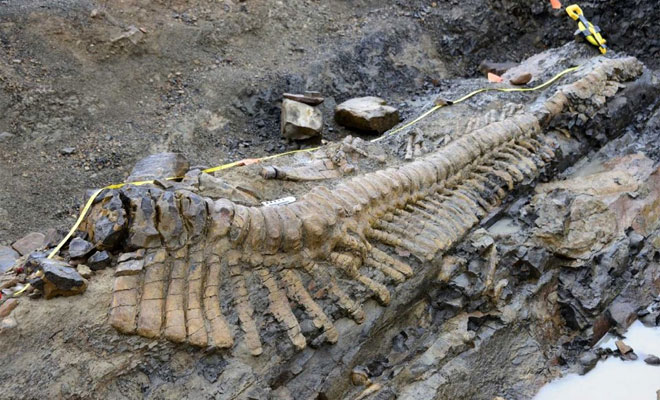Volcanic eruptions in India linked to dinosaur extinction
 Combined impacts of volcanic eruptions in India and the impact of an asteroid in Mexico brought about one of Earth’s biggest mass extinctions of dinosaurs 66 million years ago, a new study has confirmed.
|
|
|
Andrea Dutton from University of Florida and colleagues from University of Michigan in the US utilised a new technique of analysis to reconstruct Antarctic ocean temperatures that support the idea that the combined impacts of volcanic eruptions and an asteroid impact brought about one of Earth’s biggest mass extinctions 66 million years ago.Researchers used a recently developed technique called the carbonate clumped isotope paleo thermometer to analyse the chemical composition of fossil shells in the Antarctic Ocean.
This analysis shows that ocean temperatures rose approximately 14 degrees Fahrenheit, and links these findings to two previously documented warming events that occurred near the end of the Cretaceous Period, researchers said. One event was related to volcanic eruptions in India, and the other, tied to the impact of an asteroid or comet on the Yucatan Peninsula in Mexico, they said. To create their new temperature record, which spans 3.5 million years at the end of the Cretaceous and the start of the Paleogene Period, researchers analysed the isotopic composition of 29 remarkably well-preserved shells of clam-like bivalves collected on Antarctica’s Seymour Island. The CretaceousPaleogene (KPg) boundary is widely associated with the mass extinction of dinosaurs that occurred 66 million years ago. It is actually a physical boundary usually marked by a thin band of rock found in geological structures all around the world, researchers said. Scientists have shown that the K-Pg boundary contains iridium, also found in asteroids, meteorites and comets, bolstering the theory that an asteroid killed most of the creatures of the Cretaceous Period. Researchers studied the fossilised remains of Seymour Island bivalves with the hope of reconstructing past climate change across this critical interval of time. However, the only experimental evidence available at the time showed a combined signal of temperature and salinity of the coastal waters, without being able to isolate the temperature signal on its own. Researchers looked at the clumping of oxygen isotopes rather than the relative amount of oxygen isotopes in the shell, and this helped them re-interpret the data. The data show two significant temperature spikes. The first corresponds to the eruption of the Deccan traps flood basalts, researchers said. The other lines up exactly with the asteroid impact, which, in turn, may have sparked a renewed phase of volcanism in India, they said. Both events are associated with extinction events of nearly equal magnitude on Seymour Island, Antarctica, researchers said. The findings were published in the journal Nature Communications. |
|
























